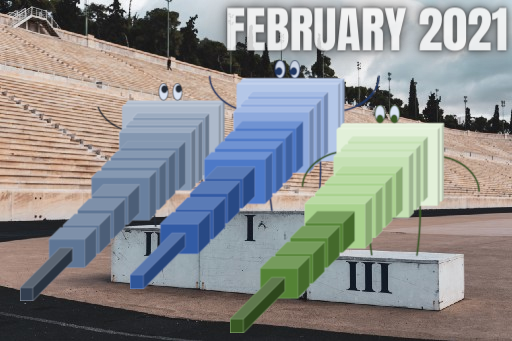The AI Monthly Top 3 — February 2021
What happened in the AI research in February 2021.

Here are the 3 most interesting research papers of the month, in case you missed any of them. It is a curated list of the latest breakthroughs in AI and Data Science by release date with a clear video explanation, link to a more in-depth article, and code (if applicable). Enjoy the read, and let me know if I missed any important papers in the comments, or by contacting me directly on LinkedIn!
Paper #1:
An AI Software Able To Detect and Count Plastic Waste in the Ocean [1]
Odei Garcia-Garin et al. from the University of Barcelona have developed a deep learning-based algorithm able to detect and quantify floating garbage from aerial images. They also made a web-oriented application allowing users to identify these garbages, called floating marine macro-litter, or FMML, within images of the sea surface.
Watch the video
A short read version

Code & web app: https://github.com/amonleong/MARLIT

Paper #2:
ShaRF: Take a Picture From a Real-Life Object, and Create a 3D Model of It [2]
Just imagine how cool it would be to just take a picture of an object and have it in 3D to insert in the movie or video game you are creating or in a 3D scene for an illustration.
Watch the video
A short read version
Project website and link to code for ShaRF: http://www.krematas.com/sharf/index.html
Paper #3:
GANsformers: Scene Generation with Generative Adversarial Transformers [3]
They basically leverage transformers’ attention mechanism in the powerful StyleGAN2 architecture to make it even more powerful!
Watch the video
A short read version

Code: https://github.com/dorarad/gansformer
More from me:
- The best way to support me is by following me on Medium.
- Subscribe to my YouTube channel.
- Follow my projects on LinkedIn.
- Learn AI together, join our Discord community, share your projects, papers, best courses, find Kaggle teammates, and much more!
- Subscribe to my newsletter!
References
[1] Odei Garcia-Garin et al., Automatic detection and quantification of floating marine macro-litter in aerial images: Introducing a novel deep learning approach connected to a web application in R, Environmental Pollution, https://doi.org/10.1016/j.envpol.2021.116490.
[2] Rematas, K., Martin-Brualla, R., and Ferrari, V., “ShaRF: Shape-conditioned Radiance Fields from a Single View”, (2021), https://arxiv.org/abs/2102.08860
[3] Drew A. Hudson and C. Lawrence Zitnick, Generative Adversarial Transformers, (2021)

